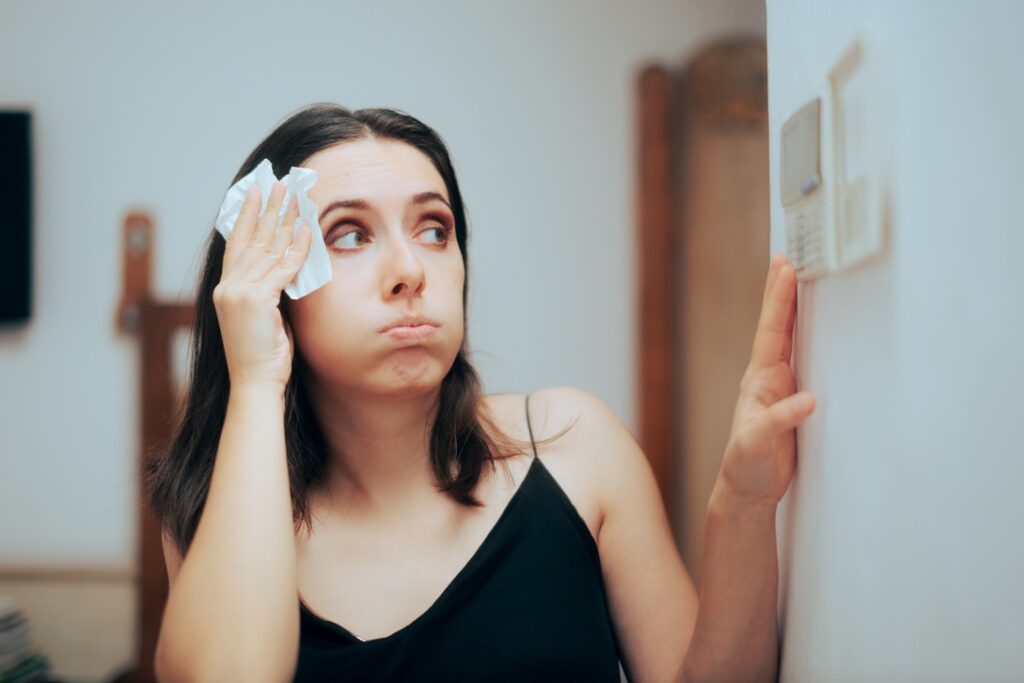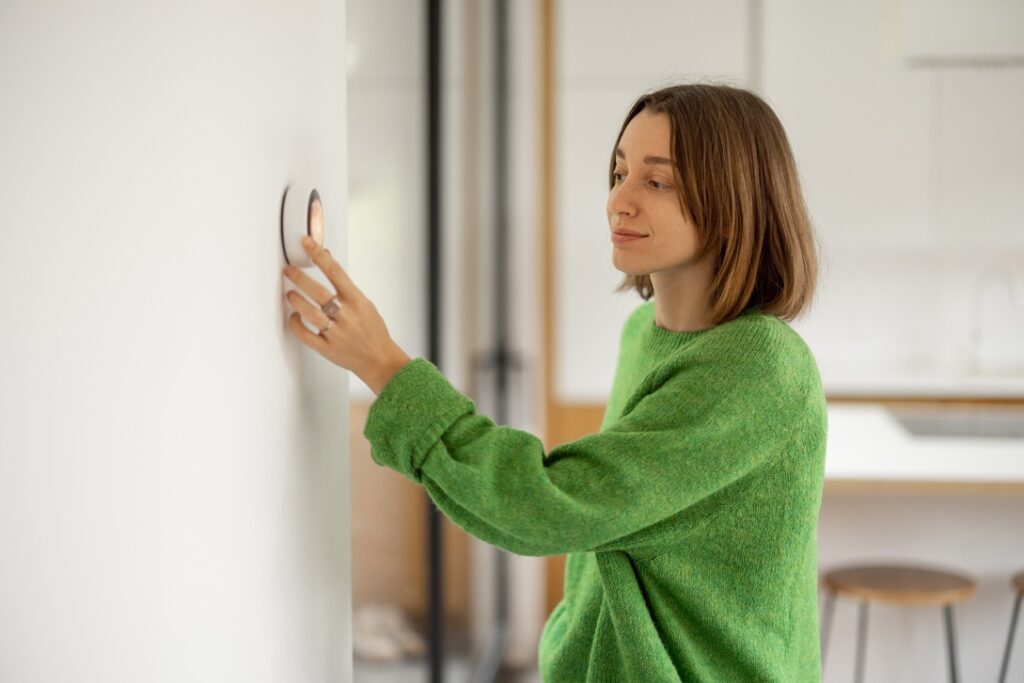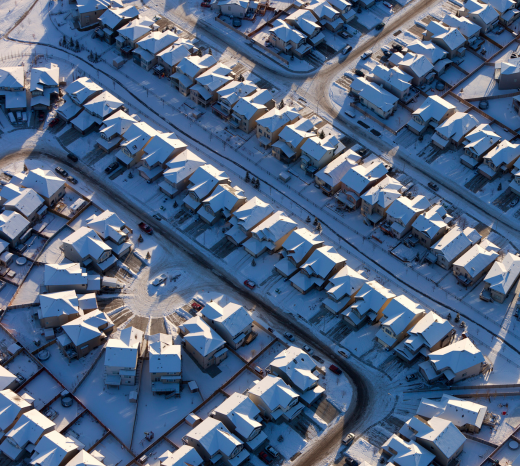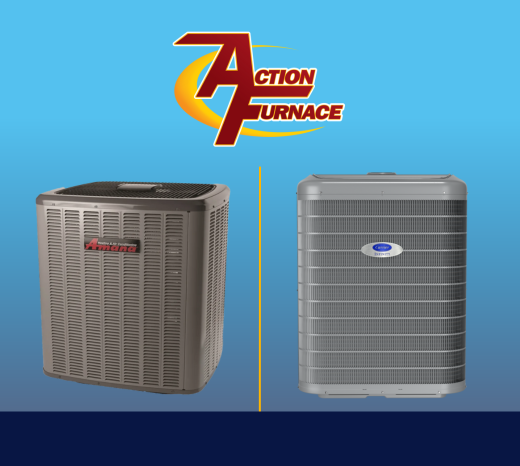The right thermostat temperature saves you money on your heating and cooling bills while reducing strain on your HVAC system. Find out how to set your thermostat in winter, summer, and throughout the rest of the year for best results—courtesy of the home comfort experts here at Action Furnace.
...
Having a comfortable indoor temperature is one of the best ways to make your house feel truly like home. However, you’ll need to balance comfort with energy efficiency if you want to avoid unnecessary costs—which means finding the thermostat settings for each season that keep your space livable without overworking your furnace or air conditioner.
We’ve performed furnace and air conditioning service throughout Alberta, so we know all about the best way to choose settings each season. Below, we’ll show you how to set your thermostat so that you can enjoy a cozy home while saving on utility bills all year long.

Understanding Your Home’s Heating & Cooling Needs
Several factors come into play when determining both the ideal indoor temperature for any home (and when to set your thermostat for it). These include:
- The number of people in your home: The more people there are, the warmer it will be—this lowers heating costs but increases cooling costs.
- The rooms most frequently used: There’s no point paying to heat areas where nobody’s spending time. Partitioning your ductwork can allow you to create heating and cooling “zones” that give you control over where treated air is flowing and make your equipment more efficient.
- The time of day: You can usually lower the thermostat at night as the warmth of your blankets will compensate for the drop in heat elsewhere in the home.
- The habits of the household. Does someone work from home, or does everyone leave for the day? There’s no point running the furnace or AC for hours in an empty house.
If multiple people live under your roof, you'll also need to negotiate an ideal temperature that satisfies everyone. When these discussions arise, remember that lower temperatures often result in substantial heating bill savings.

Achieving Summer Comfort
While it might seem counterintuitive to set your thermostat during summer if your home stays cool naturally, those with sun-facing windows or who live on higher floors often need the assistance of an air conditioner—since heat rises and also gets trapped behind glass via the greenhouse effect once light shines in through the glass.
During summer, try to maintain a steady temperature of around 21°C. A sudden heat wave might tempt you to drastically reduce the temperature, but this actually won't cool your home any quicker. What it can do is cause unnecessary strain on your cooling system and increase your risk of a mechanical failure that costs a lot of money to fix.
Tips to Keep Your Home Cool in Summer
- Close your windows and blinds to prevent the greenhouse effect from occurring.
- Consider a whole-home humidifier to keep your air from feeling clammy (and warmer than it actually is).
- Use fans in stuffy rooms to keep treated air circulating throughout the home.
- Unplug heat-producing appliances you aren’t using, as these can force your AC to work harder to reach the temperature you’ve set on your thermostat.
See Also: 10 Tips to Cool Off Your Home for Summer

Winter Temperature Settings
Albertan winters are notoriously harsh, making it tempting to crank up the heat. However, we recommend a more strategic approach.
Start the season with higher temperatures and gradually decrease your thermostat by 0.5°C each week until you reach a setting that’s suitable for everyone. This subtle adjustment won't significantly impact comfort but will lead to energy and cost savings throughout winter.
During winter, we recommend the following thermostat settings:
- 20°C when home during the day.
- 18°C while sleeping or away from home.
- For the onset of winter, 22°C is acceptable, but remember to reduce the temperature gradually to manage costs.
Additional Winter Warmth Tips
- Close doors and vents to unused rooms, focusing the heat in frequently occupied spaces.
- Seal cracks under doors and around windows to prevent heat loss.
- Dress warmly indoors to help reduce reliance on heating.
- Avoid placing furniture over vents to allow unobstructed heat circulation.
With multi-zone heating, set temperatures according to room use and occupancy:
- Keep bedrooms cooler.
- Increase temperature in common living areas.
- Lower the temperature in unused rooms and rooms with abundant sunlight.
- If someone lives in the basement, add a few extra degrees there.
Spring & Fall Thermostat Settings
The transitional times of year between the warmth of summer and the chill of winter often leave us puzzled about managing indoor temperatures. In spring or fall, when the days are mild but the nights can get chilly, it's crucial to balance your home's heating needs.
During both of these seasons, we recommend a steady thermostat setting of around 18°C to 20°C, depending on your comfort level and the external weather conditions.

Fall & Spring Thermostat Tips
- Moderate Temperatures: Take advantage of the milder daytime temperatures by turning down your thermostat and saving energy. This prevents you from overworking your heating system when temperatures drop at night.
- Night Settings: At night, consider lowering your thermostat by a degree or two. This will save energy and money while accommodating cooler sleeping conditions.
- Window Management: Make the most of sunny days. Let in the natural warmth during the day by opening curtains and blinds, and close them at night to retain heat.
- Fall furnace maintenance: During fall, inspect the insulation of your home to prepare for the upcoming winter (this is included in our furnace tune-ups, which we recommend to homeowners once each fall). Also, ensure that windows and doors are well sealed to prevent drafts.
- Spring AC Maintenance: Spring is an ideal time to schedule maintenance for your air conditioner and make sure your cooling equipment is ready for rising temperatures.
Frequently Asked Questions about Thermostat Settings
Can I Use Smart Thermostats to Heat & Cool My Home More Efficiently?
Absolutely! Smart thermostats allow you to program temperature settings based on your schedule, reducing energy usage when you're not home. They can also learn your preferences over time and adjust settings accordingly to maximize efficiency and comfort.
What If My Thermostat Isn't Working?
First, check the batteries—sometimes the solution is as simple as replacing them. If the issue persists, it may be due to more complex internal faults. If you're uncomfortable troubleshooting this yourself, don't hesitate to reach out to Action Furnace. Our team can assist you with professional diagnosis and repairs.
How Much Does a New Thermostat Cost?
The cost of a new thermostat can vary significantly depending on the model and its features. Basic models can start as low as $100, while smart thermostats can range from $250 - $1,000. Installation costs may be additional. For a more precise estimate based on your specific needs, contact Action Furnace and speak with a member of our team.
Should I Adjust My Thermostat When Going on Vacation?
Yes, adjusting your thermostat when you're away can lead to significant energy savings. In winter, set the temperature lower than usual but above freezing to prevent pipe damage. In summer, set the thermostat higher than normal to save on cooling costs.
How Often Should I Replace My Thermostat?
While thermostats don't have a set lifespan, consider upgrading if your thermostat is over 10 years old or if you're installing a new HVAC system. Modern thermostats offer improved energy efficiency and features like programmable settings or smart home integration.
What's the Best Thermostat Setting for Pets?
Pets generally tolerate similar temperatures to humans. If you're away, consider setting the thermostat to around 20°C to 22°C. However, it's important to consider the specific needs of your pets. For instance, breeds with thicker coats may prefer cooler temperatures, while smaller or short-haired breeds may require warmer settings.
Stuck Setting Your Thermostat? We Can Help!
Finding the best settings for your thermostat can be a tricky process, but the benefits it provides—from better comfort and HVAC efficiency to improved sleep and more—are definitely worth it. If you’ve got questions about your thermostat or need any other help with your HVAC equipment, contact Action Furnace. Our experienced team can’t wait to help.



